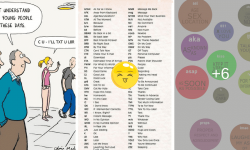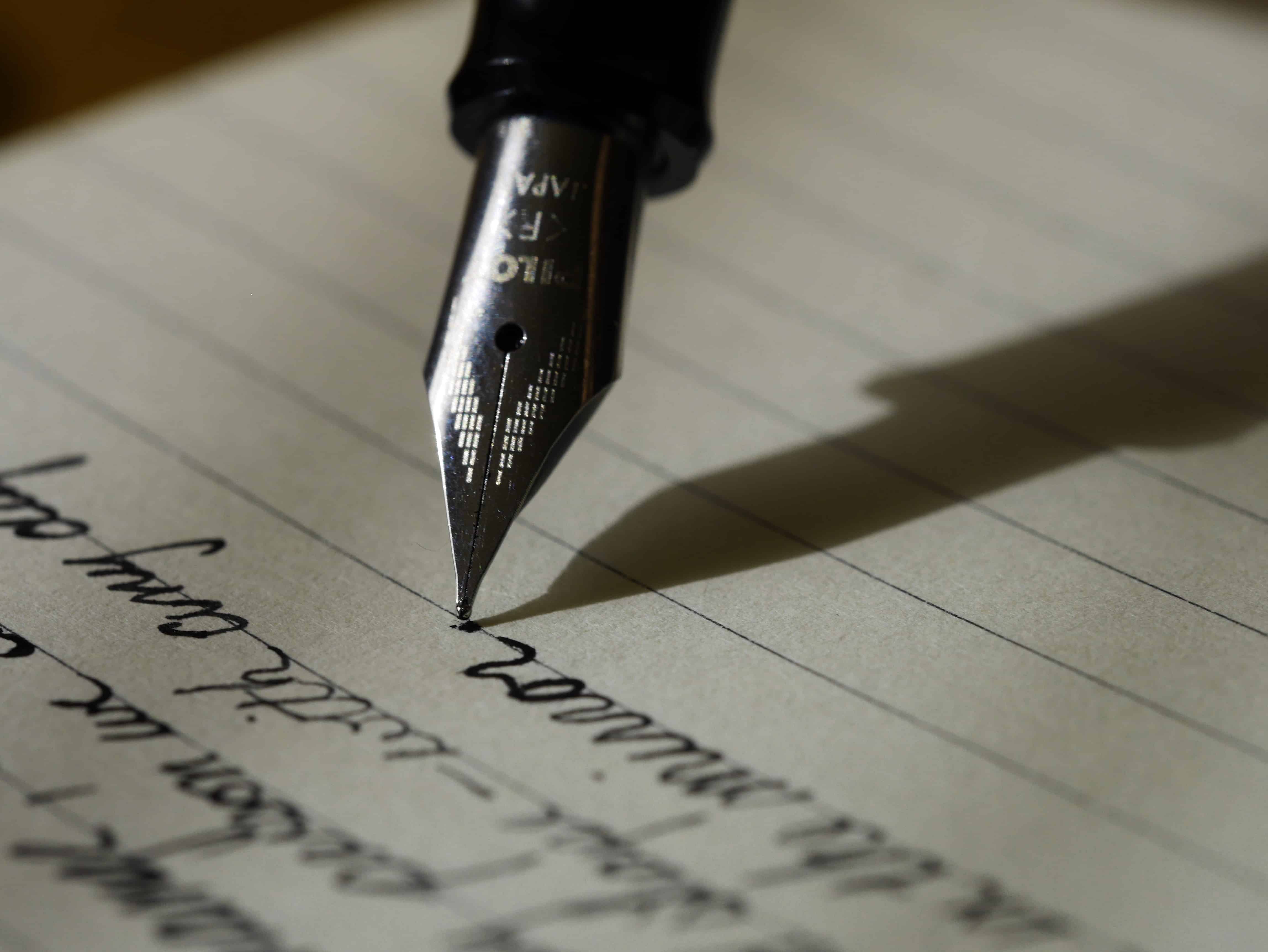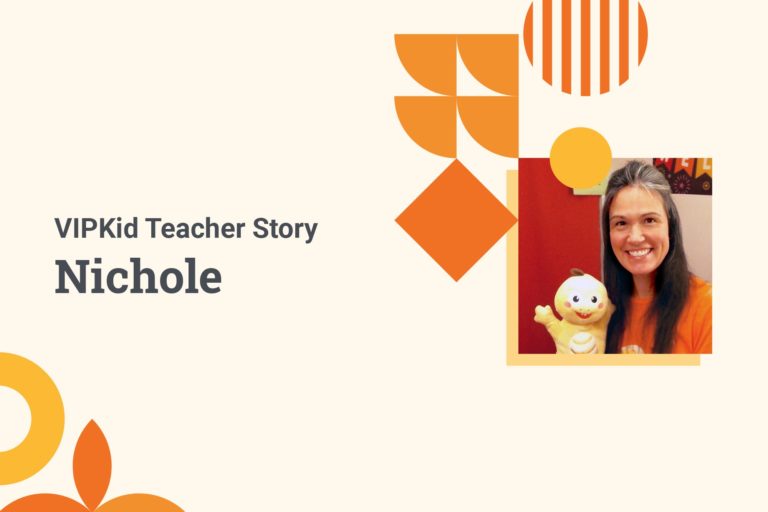

Essay Examples & Writing Tips for ESL/EFL Students (updated 2024)
In this lesson you will find simple essay examples for ESL, EFL and university students. Additional writing tips also show how to write a proper essay with minimal mistakes.
Writing essays is a powerful way to improve your language skills and express your thoughts. In our article, “Essay Examples for ESL/EFL Students,” we embark on a journey through the world of essays, offering you valuable examples and insights to help you gain confidence in your English writing abilities.
Essay Examples and Tips For ESL Students
Sample essay 1. my hobby.
My favorite hobby is playing drums. I spend a lot of my free time playing drums. I started learning to play drums when I was 9 years old. I played in my school’s band. When I was 12, I got a private drum teacher and started to really enjoy playing.
My parents bought me a drum set and I started practicing every day after school. It was very loud, but my mother never complained. I improved a lot, and playing drums has been my favorite hobby ever since.
Now, I play drums in a band with my friend Dan, who plays guitar. We write songs, perform, and practice twice a week. It’s still as fun as it was when I first started playing!
Answer these questions in your essay:
What is your hobby? When did you start doing this hobby? Why do you like doing this hobby? How did you learn this hobby? When do you usually do this hobby? How often do you do this hobby?(every day, one a week, twice a month, on weekends, etc.)
Use this sentence pattern in your essay: start/stop verb+ing I started playing basketball when I was 5 years old. I started reading novels when I was very young
Sentence pattern: verb+ing
When you put a verb after start , begin , stop , finish , or quit , you must add “ ‐ing ”
Examples: I started studying English in 3rd grade. I finished writing my homework at 11:00 last night. My father quit smoking because it is unhealthy. We began dating when we met last year.
Check Also: Essay Writing Tips & How to Avoid Typical Mistakes Short Essay Examples for ESL Students 20 Useful Vocabulary & Phrases to Start Your Essay Argumentative Essay Topics With Points for Students
SAMPLE ESSAY 2. My Favorite Place
Usually when you ask people what their favorite place is, they will talk about a distant place – maybe a beach or a beautiful mountain. But my favorite place is not far away at all. My favorite place is the forest behind my house.
Although the forest behind my house is not very big, when I was little I thought it was huge! There are so many interesting places to play and hide. I can sit on the big rocks and have a picnic, I can climb the tall trees, or I can look for lizards and other little animals.
Even though I have played there many times, I can still spend all afternoon running, playing, and hiking in the forest behind my house.
The forest behind my house is a magical place. If I am in a bad mood, I will go there to be alone and think. When I was little, I liked to imagine that there were magical people who lived in the forest. When I grow up and have children, I hope that they can live near such a special place, too.
Sentence pattern: (not) …at all “at all” means “not even a little”, and you usually put it at the end of a negative sentence (a sentence with “not”).
Example: Brian: Are you hungry: Dave: I just ate dinner. I’m not hungry at all.
Check Also: Essay Writing Tips & How to Avoid Typical Mistakes ✅ Useful Academic Expressions & Phrases For Essay Writing

SAMPLE ESSAY 3. My Best Friend
A best friend is a person you can count on, someone who will always be there to put a smile on your face when you need it. This is why I call Nathan my best friend.
I first met Nathan in second grade. His family just moved here from another town and he didn’t have any friends. We started talking, and one day I went to his house to play video games. Soon, we were hanging out every day, and we stayed at each other’s houses on the weekends.
Nathan and I have a lot in common. We both like jokes, and we both love to play soccer. In summer, we go to the swimming pool and eat ice cream cones. Next year, we are going to learn to play tennis together.
Best of all, I can tell Nathan my secrets, and I know he won’t tell anyone. I call him my best friend because I trust him, because he is a lot of fun, and because we like the same things. I hope our friendship lasts forever!
Sentence pattern: [Subject] lasts [amount of time]
Use this to describe how long something is (how long it “lasts”)
Examples: That is a long movie. It lasts almost 3 hours . Summer vacation lasts about 2 months . The cell phone battery lasts about 1 year . After 1 year, you will need to buy a new one. When my girlfriend broke up with me, she said, “ Nothing lasts forever .”
SAMPLE ESSAY 4. Trip to the Zoo
Going to the zoo is a fun and interesting way to spend a day. The last time I went to the zoo was two months ago, during summer vacation. I went with my mother, father, and sister, and it was a trip that I will never forget.
We saw all kinds of animals at the zoo. We saw monkeys, snakes, and even a lion! In addition, there were birds, lizards, and several different kinds of fish. We got to see an eel, and octopus, and a small shark. My favorite animal was the elephant. It was so huge! We fed the elephants peanuts, and it sprayed us with water!
Although the zoo is very exciting, sometimes it makes me sad to see all the animals in cages. They cannot walk, run, or fly freely. However, it is good that people can go to the zoo and learn about these animals. Therefore, I’m glad we have such a nice zoo in my city
Essay Writing Tips For ESL students:
Writing essays might seem tricky, but with a few simple tips, you can make it easier and better. Especially if English is not your first language, here are some straightforward suggestions:
- Start with a Plan: Before you begin writing, take a moment to think about your main ideas. Make a simple outline with your introduction, main points, and conclusion. It’s like making a roadmap for your essay.
- Use Simple Words: Don’t try to impress with big words. It’s better to use words you know well. Simple words can be just as effective and make your writing clearer.
- One Idea per Paragraph: Each paragraph should talk about one main idea. This makes your essay organized and easy to follow. Start a new paragraph when you move to a new topic.
- Check for Mistakes: After you finish writing, go back and check for mistakes. Look for spelling, grammar, and punctuation errors. It’s a small step, but it makes a big difference.
- Connect Your Ideas: Use words like “but,” “and,” and “so” to connect your ideas. This helps your writing flow smoothly. Remember to put a comma after these words at the beginning of a sentence.
- Read Out Loud: After you’ve written your essay, read it out loud. This helps you catch mistakes and see if your sentences sound right.
- Keep It Simple: Stick to the point. Don’t make your sentences too long or complicated. It’s better to have short, clear sentences.
You May Also Like

List of Common Acronyms in English

Empowering Future: Long-Term Benefits Of Math Tuition For Students

Masculine and Feminine Nouns in English ✅
Thanks for the essay examples
Hello Fahim, could we have a friendship with you?
You are using an outdated browser. Please upgrade your browser or activate Google Chrome Frame to improve your experience.
50+ Stellar ESL Writing Prompts to Inspire Your Students (Plus Resources to Find More Prompts)
Ever find yourself staring at a blank page with no good ideas of how to fill it?
We all do, even the most experienced writers.
But for many ESL students, the dreaded blank page isn’t just intimidating—it’s immobilizing.
After all, they’re working in a second language that might not even share the same writing system as their own.
Today, we’re going to look at more than 50 different writing prompts and how you can use them to give students a boost in the right direction.
Then we’ll cover the web’s top resources to find more great writing prompts.
Download: This blog post is available as a convenient and portable PDF that you can take anywhere. Click here to get a copy. (Download)
Process Writing

Process writing is a good place to start with your beginner students.
Simple process writing can be nothing more than a numbered list of steps written in the simple present with imperative grammar.
You can also use these prompts for intermediate and advanced students by asking them to write full paragraphs using smooth transitions.
Process Writing Prompts
- What’s your favorite food from your home country? How do you make it?
- How did you travel from your home country to the U.S.?
- What’s the best way to study for an exam?
- How does a person learn to read? What are the necessary steps?
- What’s something you’re good at? How did you learn to do it?
- How do you get ready every morning? Discuss each step of your morning routine.
- How does a person get a job? What steps must they take?
- How do you get a driver’s license? What steps must you follow?
- How does an acorn grow into a tree? What are the stages of its life?
- What are the stages of the water cycle?
How to set your students up for success
When brainstorming ideas, ask your students to list the steps of how they came up with the content to write about. If you want to challenge intermediate and advanced students, have them write paragraphs describing the brainstorming process rather than writing a numbered list.
For certain topics, students may need time for additional research, like when writing about science.
Also, be aware of any vocabulary that may be specific to the process students are describing. For example, if they’re describing a food from their home country, students may need to define a particular ingredient (e.g. kimchi, herbs de provence ) that may not have a good English equivalent.
Opinion Writing

Opinions are everywhere. From social media posts to commentary on news programs, we’re constantly exposed to other opinions and ideas. For this reason, it’s important for students to be able to both express their own opinions and evaluate the opinions of others.
And what better way to express one’s opinions than with a written argument? Here are some prompts to help your students vocalize their opinions.
Opinion Writing Prompts
- Should people under the age of 21 be allowed to drink alcohol? Please explain.
- Should college students be allowed to choose their own courses or study from a set list of required courses? Please explain.
- Is it better for young adults to live at home with their parents or to live on their own? Please explain.
- Should your country require young adults to serve in the military? Why or why not?
- Should professional athletes be allowed to compete in the Olympics? Why or why not?
- Should people be allowed to smoke in restaurants? Please explain your opinion.
- Should parents be allowed to arrange marriages for their children? Why or why not?
- Should students be required to take physical education? Why or why not?
- Should teenagers be allowed to make decisions about their sexual health without the consent of their parents? Please explain your opinion.
- Should students be required to clean their schools? Please explain.
Before starting the assignment, review modal verbs with your class . Explain to your students that the verb, “should,” is a signal word for opinion writing and is commonly used when expressing one’s thoughts, opinions and ideas.
Graphic organizers are a great way to help students think through what they believe about a given topic and get those thoughts in the right order for writing. Curriculum developer, Scholastic, has some great organizers you can print and give to your students to help them gather their thoughts before they write.
Good opinion writing takes both sides of an argument into consideration. While students should devote the majority of their essay to supporting the facts they agree with, they also need to dedicate a section to addressing the opposition’s argument and explaining why it’s wrong. This is called the rebuttal and should come just before the conclusion in an opinion piece.
Narrative Writing

Narrative writing tells a story.
It has a beginning, a middle and an end, and aims to engross the reader and make them feel as if they’re experiencing the story firsthand. Moreover, narrative writing covers a sequence of events, telling the reader how these events relate to one another.
Narrative Writing Prompts
- Think about a time in your life when you were disappointed. What caused this, and how did you get over it?
- Did you have a pet as a child? If so, tell the story of how you got it.
- Who’s your hero? What did they do to gain your respect and admiration?
- What was an important event in your childhood? Write about what happened and how it has affected you.
- Tell about a time you were embarrassed.
- How did you meet your significant other? Tell the story of that first meeting. (For younger students, you can ask the question, “How did your parents meet each other?”)
- When did you first think about traveling overseas to study English?
- What would the perfect day look like? Discuss how you would spend it from when you woke until you went to sleep. (Note: Your students need to use the conditional form for this narrative. Take time to review it with them before assigning this prompt.)
- Describe the life of a dollar bill, from when it comes off the printing press until it retires.
- Describe the life of someone famous in your culture. Where did they come from? How did they become famous?
Absolutely essential for narrative writing, transitions ensure the sequence of events flows smoothly. Before beginning the writing exercise, take a few minutes to review transition words and phrases with your students. You can even give them a copy of this list to help them get started.
Another important part of narrative writing is action words. Great for boosting the imagination, action words help the reader visualize the story while reading. Encourage your students to add extra color to their stories by having them brainstorm a list of action words at the beginning of the lesson.
Lastly, make sure that your students use proper verb tenses throughout their writing. Regardless of whether the story is being told in past or present tense, students must learn to keep the verb tense is consistent throughout the story without switching from past to present, or vice versa, unless talking about two different points in time.
Descriptive Writing

Descriptive writing is all about writing the details, and mixing them in with sensory words and literary devices . While there’s definitely a stylistic component to descriptive writing, anyone with a good-sized vocabulary and a little bit of practice can write a vivid story.
Descriptive Writing Prompts
- Go to a coffee shop or restaurant and watch the people. Describe what you see.
- Write a travel brochure for your favorite vacation spot. Describe in detail why others should visit this location.
- Describe a classroom in your home country. How’s it different from our classroom?
- Think about a time you were scared. Describe where you were and what frightened you.
- Think of a scene in your favorite movie. Describe what happened without referencing characters in the movie.
- What’s something that is very valuable to you? Describe that object.
- Close your eyes. Tune in to what you can hear, smell and feel. Now open your eyes and write about what you observed.
- (First, have your students close their eyes, then play them a clip from a movie scene) What did you picture as you listened to the scene?
- Describe your favorite Halloween candy, making note of how it tastes and smells.
- Describe your dream car.
The best way to help your students master descriptive writing is to get them accustomed to using sensory words —the words that describe how something looks, sounds, smells, feels and tastes.
If your students are describing a person, have them start at their head and move down to their feet, or vice versa. If they’re describing a room, have them start at the door and work their way around the room clockwise. That way, their descriptions are organized and structured, making it easier for the reader to form a clear picture of the imagery in their mind as they read.
Creative Writing

Everyone loves a good story, but not all people feel confident writing one of their own.
With a solid setting, character and conflict, anyone can come up with a gripping and exciting story—even your students.
Here are some writing prompts to get your students expressing themselves with stories.
Creative Writing Prompts
- A young boy sees what appears to be a UFO land outside his home late one Tuesday night. What happens next?
- Use the following scene for inspiration: The boat rocks as each towering wave tosses it into the air and then lets it plunge. You hang over the edge of the boat waiting for the current wave of nausea to pass. Suddenly you hear at least a dozen sets of boots running along the deck…
- The year is 1880, and a young girl whose bonnet hangs down her back from its strings sighs in relief. She’s in a ghost town. How did she get there? Tell the story of her past.
- This morning is just like any other school morning, except one thing: No one else is at school. The doors are opened and unlocked, but you’re completely alone. Write the story of what happened.
- Start a story with the following phrase: It was the worst mistake he’d ever made.
- Use the following scene for inspiration: She’d never seen an animal like this before, but it seems to be friendly. Just then a news alert comes over the radio…
- Start a story with the following phrase: He could see eyes in the shadows.
- Use the following scene as inspiration: They said I was free to leave, but sitting in a helicopter with the city beneath me, where could I really go?
- Choose a favorite character from a book or movie. Then put this character in a setting from a different movie or book—for example, Harry Potter finds himself on the Millennium Falcon with Chewbacca. Then, tell the story of what happens next.
- Have each person in class write down a setting, one character and one object on three separate slips of paper. Collect each category separately, shuffle them and redistribute the papers to your students. Each person must write a story incorporating the setting, character and object they received.
For a story to be successful, it needs three important elements: setting, character and conflict .
Take a few moments to talk about each of these elements with your students before they begin the activity. Have them think about these elements and how they’ll be presented in their own stories by asking the following questions:
- Where will the story take place?
- Who’s the main character of the story?
- What conflict will that person face?
- How will they overcome what is stopping them?
Once they can answer these essential questions, they’re ready to begin writing.
If you’re teaching beginner or intermediate students, separate the language from the story elements by having them write a story they already know. They can write a story of their favorite movie, rather than come up with a plot of their own.
Also, if your students are struggling to come up with their own stories, use comic books for inspiration . Writing comics is also a great way to give students writing practice without requiring imagination to go along with it.
Resources for Finding More Inspiring ESL Writing Prompts

Writer’s Digest
The Writer’s Digest website and magazine is full of tips and tricks for writing, interviews with authors, and insight into what it’s like to be in the writing business. The prompts section contains mostly fiction and creative writing prompts, and is updated every week with a new prompt.
Reddit is a huge community of people who love to share things they find around the Internet, and have conversations. The Writing Prompts section has some really creative ideas, and you can even see what other people have written in the comments.
Tumblr is a great place to find ideas. It’s a place where people can blog about whatever they want, but it’s more visual than most other blogs. (That means it focuses more on pictures.) The “Writing Prompts” Tumblr uses pictures to share prompts, both creative and nonfiction. There’s even one prompt for a song!
Lindsay Ann Learning
The prompts on this website are meant for school children, but they are excellent writing starters for any age. The page focuses on journal writing, so these prompts are mostly for nonfiction writing.
Language Is a Virus
The Writing Prompts Generator on this site has a huge number of ideas for fiction and nonfiction writing, which you can see one at a time. This website also has some fun word games to get you thinking and being creative.
This website has over 300 prompts for you to try. Just reading through the prompts will give you some new words to learn! Most of these prompts are for creative writing, but there are a small number of nonfiction thoughts in there too.
Writing Forward
This list of creative writing prompts has 25 story starters. Just pick a first sentence and see where the story takes you! There are also some questions and ideas to explore. When you’re done here, head over to the Grammar section for some tips from the pros.
Writing Prompts by 21×20 Media
Want to get your prompts in a phone-friendly format? Try the Writing Prompts app from 21×20 Media. It’s not free, but at just $1.99 you get hundreds of prompts organized by type. Look through pictures, place and character ideas, and much, much more.
Wrighting Words
You’ll find almost 500 creative writing prompts on Wrighting Words. The long list has everything from interesting story starters to fun with vocabulary words. There are even some titles and dialogue ideas. You’re sure to find something to inspire you here.
Pinterest has many great collections of writing ideas and exercises. You can really browse the entire website for ideas and inspiration. For some more focused writing, check out the Writing Picture Prompts board linked to above, which has nearly 400 picture prompts meant to inspire you.
Think Written
How about a prompt for each day of the year? Think Written has that. The list here focuses on words and themes, so you can write fiction or nonfiction—it’s up to you. For a real challenge, try following the list, doing one prompt every day. How far down the list can you make it?
Visual Prompts
If you prefer to see your prompts and not just read them, you will love the Visual Prompts website. Each prompt is written over a picture that can help you imagine what you’re writing about. There’s also a nice mix of creative and nonfiction prompts here.
The Write Prompts
The Write Prompts has almost 2,000 prompts, but you might find the word prompts the most useful. Each prompt comes with a list of vocabulary words that you have to use in your story. Can you string the words along and make an interesting story or essay?
Seventh Sanctum
The Seventh Sanctum is a collection of writing generators—websites that create prompts for you. There is a nearly infinite (never-ending) number of possible prompts! You can also try any of the other generators, like the setting (place) one , or the one that asks creative “What if…?” questions . There is so much to play with here!
Buzzfeed is mostly known for its funny picture articles , but this article has an excellent list of prompts for all kinds of writing. These prompts can be used in a school, but they can also be used by adults. Some of these will get you feeling creative, and some will make you think. Have fun with both!
The Journal
The Journal is another website for nonfiction and blog writing ideas. There is even more here too—get ideas for writing your opinions about topics, your memoirs (writings about yourself), and free-writing, which is when you don’t stop writing for 10 or 15 minutes.
Education World
Education World is a website for teachers, so these prompts are meant for the classroom. This means that they will make you think, and each prompt has a helpful tip box with some ideas for what you can write on the topic.
These are just some of the ways to get your students thinking about how to fill the page with their thoughts and ideas. A list of writing prompts and a helpful teacher can go a long way in preventing writers’ block and helping students look at every empty page as an opportunity to express themselves.
Enter your e-mail address to get your free PDF!
We hate SPAM and promise to keep your email address safe


ESL Writing Exercises: Activities, Worksheets, and Ideas!
We have several free ESL writing lessons on this page, including sample essays, sentence patterns, writing assignments, and more! If you like these lessons, consider buying our ESL writing textbooks to get even more content just like this!
Beginner Writing Lessons
The four units below are all taken from our book Write Right: 9 Beginner ESL Writing Lessons , available for instant download!
Sample Essay: “My Hobby” – Introductory sample essay that students can reference later when writing their own essays
Sentence Pattern: Start/stop verb+ing – Practice adding “ing” to verbs after “start/stop/quit/begin”
Grammar: Past Tense – Simple introduction to past tense verbs
Error Correction Worksheet – Correct the errors in this sample “My Hobby” essay
Assignment: “My Hobby” – Use the grammar and sentence patterns from Unit 1 to write an essay titled “My Hobby”
Sample Essay: “A Funny Story” – Introductory sample essay that students can reference later when writing their own essays
Past Tense Error Correction Worksheet – Review of past tense; rewrite the paragraph and correct the past tense errors
Indention and Quotations – Teaches students to indent new paragraphs and use quotation marks correctly
Indentions and Quotations: Error Correction Worksheet – Identify and correct the mistakes in the paragraph
Writing Assignment: “A Funny Story” – Students use the grammar and sentence patterns from Unit 2 to write an essay titled “A Funny Story”
Sample Essay: “My Favorite Place” – Introductory sample essay that students can reference later when writing their own essays
Sentence Pattern: Although / Even though – Introduction to “although” and “even though”, with sample sentences and practice exercises
Sentence Pattern: not…at all – Introduction to the sentence pattern “(not)…at all”, with sample sentences and practice exercises
Error Correction Worksheet – Identify and correct the mistakes in the paragraph
Writing Assignment: “My Favorite Place” – Students use the grammar and sentence patterns from Unit 3 to write an essay titled “My Favorite Place”

NEW! UNIT 4: “Letter to a Relative”
Sample Essay: “Letter to a Relative” – Introductory sample letter that students can reference later when writing their own essays
Writing Lesson: The Elements of a Letter – Introduction to the elements of a letter (greeting, body, conclusion)
Writing Lesson: Conjunctions – Introduction to the conjunctions and/but/or/so, with an explanation of how to punctuate them correctly
Error Correction: Conjunctions – Identify and correct the mistakes in the letter
Writing Assignment: “Letter to a Relative” – Students use the grammar and sentence patterns from Unit 4 to write an letter to one of their relatives
Intermediate/Advanced Writing Lessons
The writing lessons and worksheets below are taken from our book Write Right: Transitions , available for instant download!
Writing a Formal Paragraph
Topic Sentences (Introduction) – Introduction to topic sentences and their function in a formal paragraph
Introduction to Similes and Metaphors – Using similes and metaphors to write interesting topic sentences
Similes and Metaphors Review – Practice describing people and things using similes and metaphors
Topic Sentences (Review) – Practice writing topic sentences
The Body of a Paragraph (Introduction) – Introduction to the body of a paragraph and the information that should be contained therein
The Body of a Paragraph (Review) – Practice thinking of information to use in the body of a paragraph
Concluding Sentences (Introduction) – Introduction to concluding sentences and their function in a paragraph
Concluding Sentences (Review) – Practice writing concluding sentences
Punctuation and Conjunctions
Sentence Fragments and Complete Sentences – Introduction to sentence fragments and a review exercise to practice identifying them
Run-on Sentences – Worksheet to practice correcting run-on sentences
Comma Splices and Conjunctions – Worksheet to practice using conjunctions correctly to fix comma splices
Commas and Conjunctions (“and”) – Explanation of how to correctly use commas with the conjunction “and”
Semi-colons – Introduction to this often baffling piece of punctuation, with a review exercise
Transitions and Connectors
Listing Things in Order – Practice listing items or events in order using words like “First”, “Next”, “After that”, “Finally”, etc.
In addition / Additionally / Moreover / Furthermore / Plus / …as well – Introduction to these commonly used transitions, with several sample sentences
In addition / Additionally / Moreover / Furthermore / Plus / …as well – Review worksheet to practice writing sentences with these transitions
However / Nevertheless / Still / Despite that / Nonetheless / Even so – Introduction to these commonly used transitions, with several sample sentences
However / Nevertheless / Still / Despite that / Nonetheless / Even so – Review worksheet to practice writing sentences with these transitions
Therefore / Consequently / As a result / Thus / For this Reason – Introduction to these commonly used transitions, with several sample sentences
Therefore / Consequently / As a result / Thus / For this Reason – Review worksheet to practice writing sentences with these transitions
Review of these Transitions and Connectors – Review worksheet to practice using all of the transition words above
More Transitions and Connectors
Although / Even though – Introduction to these commonly used transitions, with several sample sentences and review exercises
Though – Introduction to “though” and it’s various uses in a sentence
Despite / In spite of – Introduction to these commonly used transitions, with sample sentences
Despite / In spite of – Review worksheet to practice writing sentences with these words
Despite vs. Although – Explanation of how to use these similar transition words, with several sample sentences
Despite vs. Although – Review worksheet to practice using “despite” and “although” correctly
Because vs. Because of – Explanation of how to use these similar transition words correctly, with several sample sentences
Because vs. Although – Explanation of the difference between these two words, with several examples and a review exercise
Because of vs. Despite – Worksheet to practice using these transitions, which have nearly opposite meanings
Regardless of – Introduction to this commonly used transition, with several sample sentences
Regardless of / No matter – Review worksheet to practice using these transitions correctly, including an explanation of “embedded questions”.
Review of Transitions and Connectors
Transitions and Punctuation – Explanation of how to correctly punctuate transitions using commas, periods, and semi-colons. Also includes a review worksheet.
Transitions and Punctuation (2) – Students rewrite a short essay, adding punctuation around transition words as needed.
Review of Above Transitions and Connectors – Fill in the blanks with an appropriate transition word to complete the essay
Additional Review of Transitions and Connectors – Review of several transition words/phrases (For this reason / Despite the fact that / No matter / Due to / Consequently / As a result / In spite of / Regardless of / Owing to)
Additional FREE ESL/EFL Writing Worksheets, Activities, and Ideas:
Useful phrases and sentence patterns.
Instead of / Rather than – Handout explaining how to use these phrases, with sample sentences
Instead of / Rather than – Review – Worksheet to practice using “instead of” and “rather than” correctly
Instead – Worksheet reviewing different ways to use the word “instead” in a sentence
Would rather – Handout explaining how to use “would rather”, with sample sentences
Would rather – Review – Worksheet to practice using “would rather” correctly
Prefer – Worksheet to practice using “prefer” correctly
Regardless / Regardless of / No matter – Examples and practice sentences
Gradually / Eventually / Sooner or later / At some point / In the end / …end up… – Examples and practice sentences
More sentence patterns and phrases (in no particular order):
vary / varies from __ to __
that which / those who
Just because [A] doesn’t mean that [B]
If it weren’t for [A], then I never would have [B]
If I hadn’t [A] then I wouldn’t have [B]
I wish I had / I should have
Found myself
(Currently) in the process of
Writing Activities
Putting pen to paper doesn’t always have to be boring. Here are some activities and game-like things to make writing a bit more enjoyable.
Interactive Stories – Students collaborate to write each others’ stories.
The Lying Game – Guess which statements are true and which statements are lies!
Idiom Worksheets – Give advice using idioms. Less a “game” than an “assignment,” though the idioms tend to make things a little more interesting.
Explain the Idiom – Try to guess what the idioms mean, and use them in a dialogue.
Writing Scenarios
- Business English
- Phrasal Verbs
- ESL Library
- Online ESL Curriculum

- Learning Resources
- For Teachers
40 ESL Essay Writing Topics + Prompts
By VIPKid | April 20, 2018
Ready to start teaching English online?
Writing ESL essay writing is hard for most students and many will struggle at first before learning to write well.
However, writing skills are a crucial part of learning a new language .
In this piece, we’ll share some ESL writing prompts and ESL essay topics for five different kinds of essays. They should help your students develop their grammar and vocabulary skills while teaching them how to write coherently.
(While they work for all kinds of students, we’ve found these topics are especially handy for teaching English to kids .)
Writing practice should never be boring! When you’re done this article, check out the 10 most engaging writing activities here .
Descriptive ESL Writing Topics
- Describe your favorite place in as much detail as possible.
- Describe your favorite fictional character in as much detail as possible.
- Describe a famous person – e.g. a singer or athlete – that you admire. Focus on both their appearance and personality traits.
- Describe a family member or your best friend as detailed as possible. Discuss how they look and their personality.
- Choose a hobby or favorite activity and describe why and how you do it.
- Describe your most memorable holiday or vacation spot in as much detail as possible.
- Describe a photo or work of art in as much detail as possible.
- Pick your favorite food . Describe what you taste, smell, and sense while eating or drinking it.
Earn up to $22 an Hour Teaching English from Home
Explanatory ESL Essay Topics

- Give directions for getting from one point to another . For example, how to get from your home to your school. Describe the landmarks someone might see along the way.
- Explain how to cook your favorite meal . Provide a recipe and the step-by-step instructions.
- Explain your favorite computer game . What should a player do to win? What are some playing tips?
- Explain what you would do if your friends show up at your house unexpectedly . Say how you would entertain them.
- Explain how to make a bed . This task is seemingly simple but allows you to write about everyday habits you might never think through in detail.
- Explain how to make a paper airplane . Again, this task has many precise, technical details that that should be included in the essay.
- Explain how to brush your teeth . Try to make your essay about a seemingly mundane task more interesting.
- Explain how to pack a suitcase when going on a holiday. List out all the objects and pieces of clothing you would bring.

ESL Essays Topics to Practice Verb Tenses

- Talk about a time in the past when you had to make a difficult decision . Explain what you did and why.
- Describe your dream place to live . Why would you want to live there? What would you do?
- Write about three specific goals you want to achieve this year. Explain how you are going to achieve them.
- Write about something you regret having done . Point out what could have happened if you had not made that decision.
- Describe the world 100 years from now . Describe how people live, and new inventions and also the things that will not change.
- Talk about your earliest memory . What happened? How well do you remember the events?
- Write a short essay about how you prepared for class . Now “translate” that essay into future tense. In other words, the essay should say how you plan to prepare for class.
Argumentative ESL Essay Topics

- Are smartphones good or bad? Give some arguments to support your position.
- What are the advantages and disadvantages of public schools and private schools ?
- What is your favorite book or movie ? Convince others, through your essay, to read or watch it.
- Is it the case that the more people that have cars, the better? What are some advantages and disadvantages of public transit ?
- Should money be spent on space exploration ? Give arguments to support your opinion.
- You’re the mayor of your town or city. Explain in an essay your recent decision to ban smoking . Then, from another person’s perspective, write a letter to the mayor protesting this new law.
- Reading books vs. watching movies . Which do you prefer and why?
- What are the pros and cons of e-readers compared to paper books?
Hypothetical ESL Essay Topics
- What would you do if you were late for an important class?
- What would you do if your car got a flat tire on the highway?
- If you had the power to change one thing about your past, what would it be?
- If you had the power to alter one major historical event , what would it be?
- If you could take any superhero’s powers , who would be your choice?
- How would you feel if, one day, you woke up 300 years in the past ?
- What would you do if you won the lottery ? Would your life change day-to-day?

Some General ESL Essay Tips
When checking ESL essays, pay attention to the following key points:
- Grammar. The ESL essay should be grammatically correct.
- Vocabulary. The more new vocabulary the essay contains, the more points it will get.
- Text flow. The text of the essay should flow logically and naturally. Pay attention to the use of connecting words and phrases. These include first of all , secondly , moreover , in addition , besides , finally , on the one hand, on the other hand , and as a result .
- Sticking to the topic. Some essay writers tend to deviate from ESL essay topics. However, a perfect ESL essay should stay as close to the point as possible.
A good essay typically has the following parts:
- An introduction . Here, the author gives some general information about the topic or lays out their argument. An effective intro entices readers to read further.
- The body . In an argumentative essay, the body could be 2 to 3 paragraphs. Each should introduce their arguments and support them with examples. In other types of essays, the content may vary. For example, the body may include descriptions, explanations, or personal stories.
- Conclusion . The author should logically conclude or summarize their thoughts and arguments.
How Do You Teach Writing?
It doesn’t matter if you teach English online or if you’re a classroom teacher, we want to know about your teaching styles. Do you use writing prompts, games and activities, or something else entirely?
Earn $15-22 an hour Teaching English from Home
Share This Story
Related Articles

Tips to Help Increase Your VIPKid Class Bookings
If you're looking to increase your class bookings with VIPKid, look no further! We have 6 tips to help get you more classes.
June 10, 2021

How to Prepare for Your VIPKid Interview: 18 Dos and Don’ts
Finally, a play-by-play on How to Prepare for Your VIPKid Interview. We’ve broken down 18 Dos and Don’ts for the hiring process, what to expect, and how to Wow the interviewers!
May 13, 2021

How to Improve Reading Comprehension When Teaching English
VIPKid Teacher Nichole, a reading specialist with more than 20 years of teaching experience discusses her tips Improve Reading Comprehension.
May 4, 2021
By continuing to use this site, you accept our use of cookies . You can change your cookie settings at any time.
ESL Essay: Unboxing an ESL Essay with Topics and Examples
Learning foreign languages can be enjoyable, however, writing essays is often the one task that students dread. Fortunately, there are reliable custom writing services like Edusson that can help students create compelling and interesting ESL essays. In this post I will explain what an ESL essay is, why it is needed, and how to make it interesting.
What is ESL Essay?
ESL – is an abbreviation that stands for English as a second language . ESL Essay is an essay that is written by a person whose mother tongue is not English. In today’s world, the English language has become a very important thing. It is now the third most widespread native language in the world and the global language of business. Many people all over the world learn it because some of them want to move to English speaking country in pursuit of a better life, some of them want to get a better job at their country and some of them just like this language.
Why writing ESL Essay?
The main reason for writing ESL Essay is practice. As people say – practice makes perfect and they are not wrong. Because the only way you can make something good is to do it over and over again. While learning English most people usually think only about their conversational skills and I understand them. When you are learning a foreign language your biggest desire is to start speaking it as soon as possible and hopefully sound like a native speaker. But they forget that writing skills are also very important and you should practice them on a regular basis. And what is more suitable and fun way to do it? Writing essays, of course!
What can you write about?

Finished papers
Customer reviews

Interesting ESL Essay Topics
Descriptive.
- What is your favorite place? Describe it as detailed as you can.
- What is your favorite movie/book character? Describe him/her as detailed as you can.
- What are your hobbies? What do you like to do in your free time?
- If you could wear only one set of clothes for the rest of your life, what would you chose and why?
- Imagine that you have a dinner party for 4 guests, who would you invite and what kind of activities would you suggest to your guests?
Persuasive Writing Practice
- Tell about your favorite book or movie and why do you think other people have to read or watch it.
- What do you think about technologies taking over people’s lives? Why are we so dependent on it? Would we be better off without them?
- Do you think it would be better if students had a summer break or be in a year-round school system with more breaks throughout the year?
Verb Tense Practice
- Imagine that you are babysitting a child who accidentally breaks a window. Explain to the child how did it happen and how it could have been avoided.
- Tell about one thing that you could never live without and why?
- Imagine that you have got a chance to build a perfect city, describe it and explain why is it perfect.
- Set yourself some specific goals you want to accomplish this year and explain how you are going to accomplish them.
Writing Process
- Think about what topic. You need to get as much information as you possibly can. If you are writing about something that is not from your own experience, do not just use Wikipedia, I know we all love it, but it is not enough. You need to get some good and reliable sources. Do not forget about the library.
- Focus. The essay is written strictly in accordance with the theme, and it uses clear arguments. The content does not deviate from the given topic.
- Organization. A good writer does not write everything that comes to his mind. He ponders the structure and order in which his thoughts will be expressed, before beginning the work on the text. But remember that you can always go back and made amends.
- Support. In a good essay, all thoughts that are wrote down must be supported by facts, or statements in the text that the author analyzes.
- Clarity. A good composition is written by taking into account all the rules of grammar, spelling and punctuation.
- Set aside some time to write. It is important to remember to not be in a rush as it will not result in a good essay. Allow yourself around an hour or two and don’t forget to take breaks in between in order to give your brain a rest. Additionally, if you don’t feel like you have enough time or writing skills to complete the essay, you can always opt to pay for thesis writing services.
Essay Outline
Although writing an essay can seem tedious and hard, it can also be enjoyable. You have the freedom to choose any topic that you would like to write about, and if you are passionate about it, the words will flow naturally. However, there are some rules to follow, like the structure of the essay. If you are struggling with it, you can buy a literature essay to get a better idea of how to tackle your essay-writing project.
When writing an ESL Essay you have to follow specific 5-paragraph essay format. Here is a sample essay outline, but keep in mind that once you are okay with working with this kind of format, you can always expand it later, add more details or information etc Connect with a professional writer in 5 simple steps. Start now Please provide as many details about your writing struggle as possible. Next What's the area of study of your paper? English Business and Entrepreneurship Nursing History African-American Studies Accounting Anthropology Architecture Art, Theatre and Film Biology Business and Entrepreneurship Chemistry Communication Strategies Computer Science Criminology Economics Education English Engineering Environmental Issues Ethics Finance Geography Healthcare History International and Public Relations Law and Legal Issues Linguistics Literature Management Marketing Mathematics Music Nursing Nutrition Other Philosophy Physics Political Science Psychology Religion and Theology Sociology Sport Technology Tourism Next How many pages do you need? Next When is it due? 01 AM 02 AM 03 AM 04 AM 05 AM 06 AM 07 AM 08 AM 09 AM 10 AM 11 AM 12 AM 01 PM 02 PM 03 PM 04 PM 05 PM 06 PM 07 PM 08 PM 09 PM 10 PM 11 PM 12 PM Next What's your e-mail? Next Done!
- Introduction:
Here you have to give some general information about your topic, tell the reader why he should be interested in what you are writing, in different words – attention catcher, make your reader want to stay and read your paper to the very end
Thesis statement:
Topic Sentence 1:
- Support your argument
- Give more details, explanations, examples
- Conclusion of the paragraph
Topic Sentence 2:
Topic Sentence 3:
- Concluding Paragraph
Restate thesis using different words:
Sum up the main points, return to general context, wrap-up the essay, but make it interesting and memorable.
If you are reading this part of this post, I suppose you still not sure that your writing skills are good enough. I can understand that, but do not worry, I have a couple of resources that will help you master your skills.
- Essay Checker – the most important thing to do after you have finished writing, is to check your essay for plagiarism, check its readability level, see if you have answered to all the questions and if your answers are relevant. You can do all these things using this one resource. How convenient is that?
- Essay Topic Generator – this resource I am giving to you just in case you have problems with picking a topic for your essay. I know that that might be a real problem for many students. So, here you go, just enter the keywords of your essay and pick the category of it and here you go, you have a great essay title.
- Essay Examples – I know that sometimes it is pretty hard to understand how to structure your essay from the outline only, that is why using this site you can see essay examples that will give you a general idea. Remember that these are just samples, not free essays for you to take.
- Essay Editing Service – even when you know all the rules you still might feel insecure and have doubts that something is not right. In this case, use this site, where professional editors will check and correct your essay. Make it as good as it can be.
To sum up, I hope you found this article useful and interesting. Remember, if you purchasing a term paper , you are still responsible for the work you submit and should treat it as seriously as if you had written it yourself. However, don’t worry too much if you make mistakes as it’s not the end of the world. Learn from your errors, and you’ll be better prepared for the next time. That is all I have for you today.
Related posts:
- How to Write an Abstract for a Research Paper
- How to Write a Cause and Effect Essay
- How to Format Essay. Example MLA, APA Essay Format
- Best 25 Travel Blogs for Students 2023
Improve your writing with our guides

Writing a Great Research Summary and where to Get Help on it

How to Write a Synthesis Essay

How To Write A Process Essay: Essay Outline, Tips, Topics and Essay Help
Get 15% off your first order with edusson.
Connect with a professional writer within minutes by placing your first order. No matter the subject, difficulty, academic level or document type, our writers have the skills to complete it.
100% privacy. No spam ever.


Are you a learner at B2 English level (upper intermediate) ? This section offers writing practice to help you write clear, detailed text on a wide range of topics related to your interests. Texts include essays, reports, reviews, messages and emails.
Each lesson has a preparation task, a model text with writing tips and three tasks to check your understanding and to practise a variety of writing skills. Make a start today.
Choose a writing lesson

A covering email
Learn how to write a covering email to accompany a job application.
- Read more about A covering email
- Log in or register to post comments

Learn how to write a curriculum vitae, often called a CV in the UK or résumé in American English.
- Read more about A CV

A letter of complaint
Learn how to write a letter of complaint.
- Read more about A letter of complaint

A report on working abroad
Learn how to write a report on working abroad.
- Read more about A report on working abroad

A summary of a line graph
Learn how to describe a line graph.
- Read more about A summary of a line graph

Learn how to write an advert.
- Read more about An advert

An email to request time off
Learn how to write an email to request time off work.
- Read more about An email to request time off

An email to your professor
Learn how to write an email to your university professor.
- Read more about An email to your professor

An informal email to a friend
Learn how to write an informal email to a friend.
- Read more about An informal email to a friend

An opinion essay
Learn how to write an opinion essay.
- Read more about An opinion essay

Comparing two charts
Learn how to write about and compare two pie charts.
- Read more about Comparing two charts

Giving instructions by email
Learn how to write an email to give instructions.
- Read more about Giving instructions by email
Learn to write in English with confidence
Our online English classes feature lots of useful writing materials and activities to help you develop your writing skills with confidence in a safe and inclusive learning environment.
Practise writing with your classmates in live group classes, get writing support from a personal tutor in one-to-one lessons or practise writing by yourself at your own pace with a self-study course.
Explore courses
Online courses

Group and one-to-one classes with expert teachers.

Learn English in your own time, at your own pace.

One-to-one sessions focused on a personal plan.

Get the score you need with private and group classes.
Have a language expert improve your writing
Run a free plagiarism check in 10 minutes, generate accurate citations for free.
- Knowledge Base
The Beginner's Guide to Writing an Essay | Steps & Examples
An academic essay is a focused piece of writing that develops an idea or argument using evidence, analysis, and interpretation.
There are many types of essays you might write as a student. The content and length of an essay depends on your level, subject of study, and course requirements. However, most essays at university level are argumentative — they aim to persuade the reader of a particular position or perspective on a topic.
The essay writing process consists of three main stages:
- Preparation: Decide on your topic, do your research, and create an essay outline.
- Writing : Set out your argument in the introduction, develop it with evidence in the main body, and wrap it up with a conclusion.
- Revision: Check your essay on the content, organization, grammar, spelling, and formatting of your essay.
Instantly correct all language mistakes in your text
Upload your document to correct all your mistakes in minutes

Table of contents
Essay writing process, preparation for writing an essay, writing the introduction, writing the main body, writing the conclusion, essay checklist, lecture slides, frequently asked questions about writing an essay.
The writing process of preparation, writing, and revisions applies to every essay or paper, but the time and effort spent on each stage depends on the type of essay .
For example, if you’ve been assigned a five-paragraph expository essay for a high school class, you’ll probably spend the most time on the writing stage; for a college-level argumentative essay , on the other hand, you’ll need to spend more time researching your topic and developing an original argument before you start writing.
Receive feedback on language, structure, and formatting
Professional editors proofread and edit your paper by focusing on:
- Academic style
- Vague sentences
- Style consistency
See an example

Before you start writing, you should make sure you have a clear idea of what you want to say and how you’re going to say it. There are a few key steps you can follow to make sure you’re prepared:
- Understand your assignment: What is the goal of this essay? What is the length and deadline of the assignment? Is there anything you need to clarify with your teacher or professor?
- Define a topic: If you’re allowed to choose your own topic , try to pick something that you already know a bit about and that will hold your interest.
- Do your research: Read primary and secondary sources and take notes to help you work out your position and angle on the topic. You’ll use these as evidence for your points.
- Come up with a thesis: The thesis is the central point or argument that you want to make. A clear thesis is essential for a focused essay—you should keep referring back to it as you write.
- Create an outline: Map out the rough structure of your essay in an outline . This makes it easier to start writing and keeps you on track as you go.
Once you’ve got a clear idea of what you want to discuss, in what order, and what evidence you’ll use, you’re ready to start writing.
The introduction sets the tone for your essay. It should grab the reader’s interest and inform them of what to expect. The introduction generally comprises 10–20% of the text.
1. Hook your reader
The first sentence of the introduction should pique your reader’s interest and curiosity. This sentence is sometimes called the hook. It might be an intriguing question, a surprising fact, or a bold statement emphasizing the relevance of the topic.
Let’s say we’re writing an essay about the development of Braille (the raised-dot reading and writing system used by visually impaired people). Our hook can make a strong statement about the topic:
The invention of Braille was a major turning point in the history of disability.
2. Provide background on your topic
Next, it’s important to give context that will help your reader understand your argument. This might involve providing background information, giving an overview of important academic work or debates on the topic, and explaining difficult terms. Don’t provide too much detail in the introduction—you can elaborate in the body of your essay.
3. Present the thesis statement
Next, you should formulate your thesis statement— the central argument you’re going to make. The thesis statement provides focus and signals your position on the topic. It is usually one or two sentences long. The thesis statement for our essay on Braille could look like this:
As the first writing system designed for blind people’s needs, Braille was a groundbreaking new accessibility tool. It not only provided practical benefits, but also helped change the cultural status of blindness.
4. Map the structure
In longer essays, you can end the introduction by briefly describing what will be covered in each part of the essay. This guides the reader through your structure and gives a preview of how your argument will develop.
The invention of Braille marked a major turning point in the history of disability. The writing system of raised dots used by blind and visually impaired people was developed by Louis Braille in nineteenth-century France. In a society that did not value disabled people in general, blindness was particularly stigmatized, and lack of access to reading and writing was a significant barrier to social participation. The idea of tactile reading was not entirely new, but existing methods based on sighted systems were difficult to learn and use. As the first writing system designed for blind people’s needs, Braille was a groundbreaking new accessibility tool. It not only provided practical benefits, but also helped change the cultural status of blindness. This essay begins by discussing the situation of blind people in nineteenth-century Europe. It then describes the invention of Braille and the gradual process of its acceptance within blind education. Subsequently, it explores the wide-ranging effects of this invention on blind people’s social and cultural lives.
Write your essay introduction
The body of your essay is where you make arguments supporting your thesis, provide evidence, and develop your ideas. Its purpose is to present, interpret, and analyze the information and sources you have gathered to support your argument.
Length of the body text
The length of the body depends on the type of essay. On average, the body comprises 60–80% of your essay. For a high school essay, this could be just three paragraphs, but for a graduate school essay of 6,000 words, the body could take up 8–10 pages.
Paragraph structure
To give your essay a clear structure , it is important to organize it into paragraphs . Each paragraph should be centered around one main point or idea.
That idea is introduced in a topic sentence . The topic sentence should generally lead on from the previous paragraph and introduce the point to be made in this paragraph. Transition words can be used to create clear connections between sentences.
After the topic sentence, present evidence such as data, examples, or quotes from relevant sources. Be sure to interpret and explain the evidence, and show how it helps develop your overall argument.
Lack of access to reading and writing put blind people at a serious disadvantage in nineteenth-century society. Text was one of the primary methods through which people engaged with culture, communicated with others, and accessed information; without a well-developed reading system that did not rely on sight, blind people were excluded from social participation (Weygand, 2009). While disabled people in general suffered from discrimination, blindness was widely viewed as the worst disability, and it was commonly believed that blind people were incapable of pursuing a profession or improving themselves through culture (Weygand, 2009). This demonstrates the importance of reading and writing to social status at the time: without access to text, it was considered impossible to fully participate in society. Blind people were excluded from the sighted world, but also entirely dependent on sighted people for information and education.
See the full essay example
The conclusion is the final paragraph of an essay. It should generally take up no more than 10–15% of the text . A strong essay conclusion :
- Returns to your thesis
- Ties together your main points
- Shows why your argument matters
A great conclusion should finish with a memorable or impactful sentence that leaves the reader with a strong final impression.
What not to include in a conclusion
To make your essay’s conclusion as strong as possible, there are a few things you should avoid. The most common mistakes are:
- Including new arguments or evidence
- Undermining your arguments (e.g. “This is just one approach of many”)
- Using concluding phrases like “To sum up…” or “In conclusion…”
Braille paved the way for dramatic cultural changes in the way blind people were treated and the opportunities available to them. Louis Braille’s innovation was to reimagine existing reading systems from a blind perspective, and the success of this invention required sighted teachers to adapt to their students’ reality instead of the other way around. In this sense, Braille helped drive broader social changes in the status of blindness. New accessibility tools provide practical advantages to those who need them, but they can also change the perspectives and attitudes of those who do not.
Write your essay conclusion
Checklist: Essay
My essay follows the requirements of the assignment (topic and length ).
My introduction sparks the reader’s interest and provides any necessary background information on the topic.
My introduction contains a thesis statement that states the focus and position of the essay.
I use paragraphs to structure the essay.
I use topic sentences to introduce each paragraph.
Each paragraph has a single focus and a clear connection to the thesis statement.
I make clear transitions between paragraphs and ideas.
My conclusion doesn’t just repeat my points, but draws connections between arguments.
I don’t introduce new arguments or evidence in the conclusion.
I have given an in-text citation for every quote or piece of information I got from another source.
I have included a reference page at the end of my essay, listing full details of all my sources.
My citations and references are correctly formatted according to the required citation style .
My essay has an interesting and informative title.
I have followed all formatting guidelines (e.g. font, page numbers, line spacing).
Your essay meets all the most important requirements. Our editors can give it a final check to help you submit with confidence.
Open Google Slides Download PowerPoint
An essay is a focused piece of writing that explains, argues, describes, or narrates.
In high school, you may have to write many different types of essays to develop your writing skills.
Academic essays at college level are usually argumentative : you develop a clear thesis about your topic and make a case for your position using evidence, analysis and interpretation.
The structure of an essay is divided into an introduction that presents your topic and thesis statement , a body containing your in-depth analysis and arguments, and a conclusion wrapping up your ideas.
The structure of the body is flexible, but you should always spend some time thinking about how you can organize your essay to best serve your ideas.
Your essay introduction should include three main things, in this order:
- An opening hook to catch the reader’s attention.
- Relevant background information that the reader needs to know.
- A thesis statement that presents your main point or argument.
The length of each part depends on the length and complexity of your essay .
A thesis statement is a sentence that sums up the central point of your paper or essay . Everything else you write should relate to this key idea.
The thesis statement is essential in any academic essay or research paper for two main reasons:
- It gives your writing direction and focus.
- It gives the reader a concise summary of your main point.
Without a clear thesis statement, an essay can end up rambling and unfocused, leaving your reader unsure of exactly what you want to say.
A topic sentence is a sentence that expresses the main point of a paragraph . Everything else in the paragraph should relate to the topic sentence.
At college level, you must properly cite your sources in all essays , research papers , and other academic texts (except exams and in-class exercises).
Add a citation whenever you quote , paraphrase , or summarize information or ideas from a source. You should also give full source details in a bibliography or reference list at the end of your text.
The exact format of your citations depends on which citation style you are instructed to use. The most common styles are APA , MLA , and Chicago .
Is this article helpful?
Other students also liked.
- How long is an essay? Guidelines for different types of essay
- How to write an essay introduction | 4 steps & examples
- How to conclude an essay | Interactive example
More interesting articles
- Checklist for academic essays | Is your essay ready to submit?
- Comparing and contrasting in an essay | Tips & examples
- Example of a great essay | Explanations, tips & tricks
- Generate topic ideas for an essay or paper | Tips & techniques
- How to revise an essay in 3 simple steps
- How to structure an essay: Templates and tips
- How to write a descriptive essay | Example & tips
- How to write a literary analysis essay | A step-by-step guide
- How to write a narrative essay | Example & tips
- How to write a rhetorical analysis | Key concepts & examples
- How to Write a Thesis Statement | 4 Steps & Examples
- How to write an argumentative essay | Examples & tips
- How to write an essay outline | Guidelines & examples
- How to write an expository essay
- How to write the body of an essay | Drafting & redrafting
- Kinds of argumentative academic essays and their purposes
- Organizational tips for academic essays
- The four main types of essay | Quick guide with examples
- Transition sentences | Tips & examples for clear writing
"I thought AI Proofreading was useless but.."
I've been using Scribbr for years now and I know it's a service that won't disappoint. It does a good job spotting mistakes”

IMAGES
VIDEO
COMMENTS
In our article, “Essay Examples for ESL/EFL Students,” we embark on a journey through the world of essays, offering you valuable examples and insights to help you gain confidence in your English writing abilities. Essay Examples and Tips For ESL Students . SAMPLE ESSAY 1. My Hobby. My favorite hobby is playing drums.
Of course, essay writing can be challenging for ESL students. They must order their thoughts and construct their arguments—all in their second language. So, here are seven ESL essay writing tips that will allow your students to weave together a coherent and persuasive essay, plus teacher resources for writing activities, prompts and lessons!
WritePlacer® ESL provides a direct measure of the writing skills of students who identify as English language learners. Students taking WritePlacer ESL are presented with a prompt and asked to write an essay of approximately 300 to 600 words. WritePlacer ESL prompts are carefully designed to be culturally accessible to English language learners.
Giving good ESL writing prompts is important because inspiring prompts inspire students to write more and writing more is how they improve. Read this post to learn 50 excellent ESL writing prompts for all essay types: process, creative, opinion writing. Then look into our list of resources to find more great prompts.
Beginner Writing Lessons. The four units below are all taken from our book Write Right: 9 Beginner ESL Writing Lessons, available for instant download!. UNIT 1. Sample Essay: “My Hobby” – Introductory sample essay that students can reference later when writing their own essays
Describe your favorite fictional character in as much detail as possible. Describe a famous person – e.g. a singer or athlete – that you admire. Focus on both their appearance and personality traits. Describe a family member or your best friend as detailed as possible. Discuss how they look and their personality.
ESL – is an abbreviation that stands for English as a second language . ESL Essay is an essay that is written by a person whose mother tongue is not English. In today’s world, the English language has become a very important thing. It is now the third most widespread native language in the world and the global language of business.
This section offers writing practice to help you write clear, detailed text on a wide range of topics related to your interests. Texts include essays, reports, reviews, messages and emails. Each lesson has a preparation task, a model text with writing tips and three tasks to check your understanding and to practise a variety of writing skills.
Body Of The Essay. Detail statistics. Talk about relevant information. Present any research you have performed. Include any data you have discovered relative to the subject. Conclusion. Give the thesis statement once again. Support your arguments. Include a call to action.
The essay writing process consists of three main stages: Preparation: Decide on your topic, do your research, and create an essay outline. Writing: Set out your argument in the introduction, develop it with evidence in the main body, and wrap it up with a conclusion. Revision: Check your essay on the content, organization, grammar, spelling ...